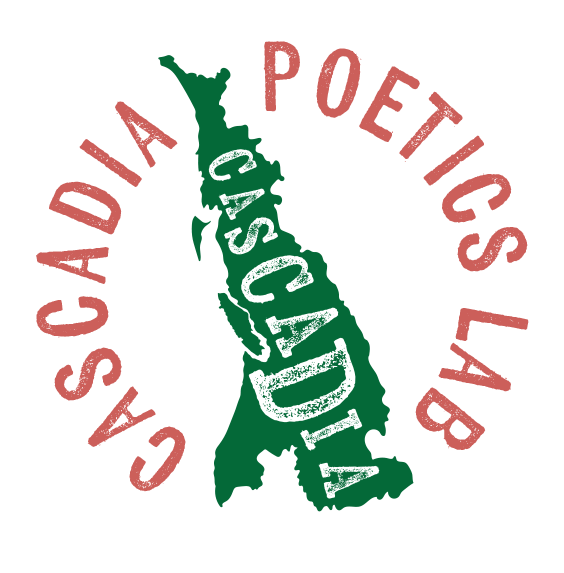– Kenneth Rexroth
In this course, we’ll look at some of the distinctions that make up the poetics of our region and beyond, from the haibun of Basho to the list poems of Sei Shonagon, serial poems of Nathaniel Mackey and Robin Blaser and Lissa Wolsak’s phosphorus of the mystery. Class time will be given to readings (& listenings) of work, as well as writing exercises and discussion.
Key Facets:
Ring of Fire Facts: The Pacific Ring of Fire has 452 volcanoes and is home to over 75% of the world’s active and dormant volcanoes. About 90% of the world’s earthquakes and 80% of the world’s largest earthquakes occur along the Ring of Fire. What ramifications does this fact have on people in this part of the world, especially when you consider we’re beings affected mostly by energy; by invisible fields of all kinds.
George Bowering: I do not compose poetry to show you what I have seen, but rather because I have seen…this poet’s job is not to tell you what it is like, but to make a poem…Not trying to use your poems to prove a point, or address an argument. Not to try to control what they’re (the poems) are doing…but rather to be a kind of audience listening to where the poem is going to go…the practice of outside…Try to forget your own voice…and listen hard for what the language is saying… you yourself are the audience, hearing a voice you’ve trained your ear to receive
Serial Poem not epic.
Sam Hamill soundbites.
Robin Blaser:
It seems to me that the whole marvelous thing of open form is a traditional and an American problem…the whole thing came in a geography where the traditional forms would no longer hold our purposes. I was very moved when, some years ago, I was reading a scholarly book by Jo Miles in which she is making an argument for the sublime poem…and she begins to talk about the narrative of the spirit. I think the key word here is narrative – the story of persons, events, activities, images, which tell the tale of the spirit.
I’m interested in a particular kind of narrative – what Jack Spicer and I agreed to call in our own work the serial poem – that is a narrative which refuses to adopt an imposed story line, and completes itself only in the sequence of poems, if, in fact, a reader insists upon a definition of completion which is separate from the activity of the poems themselves. The poems tend to act as a sequence of energies which run out when so much of a tale is told. I like to describe this in Ovidian terms, as a Carmen perpetuum, a continuous song in which the fragmented subject matter is only apparently disconnected:
to tell of bodies
transformed
into new shapes
you gods, whose power
worked all transformations,
help the poet’s breathing,
lead my continuous song
from the beginning to the present world
– from The Fire (1967)
So not simply to be led to a conclusion, but to be taken by the magic of the moment of composition. Charles Olson said: “we do what we know before we know what we do.”
Read: Image Nations 1, 3, 8 & 12
Spirituality/Cosmology: While the East Coast has more in common with Europe, the West Coast’s proximity to Asian and indigenous cultures colors this part of the world. The philosopher Ervin Laszlo says:
the traditional Eastern conception differs from the view held by most people in the West. In the modern commonsense conception, reality is material. The things that truly exist are bits or particles of matter. They can form into atoms, which can further form into molecules, cells, and organisms – as well as into planets, stars, stellar systems, and galaxies. Matter moves about in space, acted on by energy. Energy also enjoys reality (since it acts on matter), but space does not: space is merely the backdrop or the container against which, or in which, material things trace their careers…space is…empty and passive and not even real…in complete opposition to the view we get from contemporary physics…the unified vacuum – is in fact the primary reality of the universe…What we think of as matter is but the quantized, semi-stable bundling of the energies that spring from the vacuum.
Zen Buddhism and other Eastern religions. Hua-yen Buddhism is especially appropriate. In Francis Cook’s The Jewel Net of Indra is is described as the one vehicle with common teaching and the one vehicle with distinct teaching. That distinct teaching would be that the universe is “an infinitely repeated identity and interdependence of all phenomena.” See also Alfred North Whitehead. Yang Wan Li: The poet identifies a circumstance in which the poem reveals itself.
Lissa Wolsak from An Heuristic Prolusion.
Exercise: Duo Corpse
Basho Haibun, Andrew Schelling and Sam Hamill tips (handout)
Sound: Anne Waldman on Marriage: A Sentence and Dark o’ Night
Exercise: Haibun
Sei Shonagon List Poems
Exercise: List Poem
